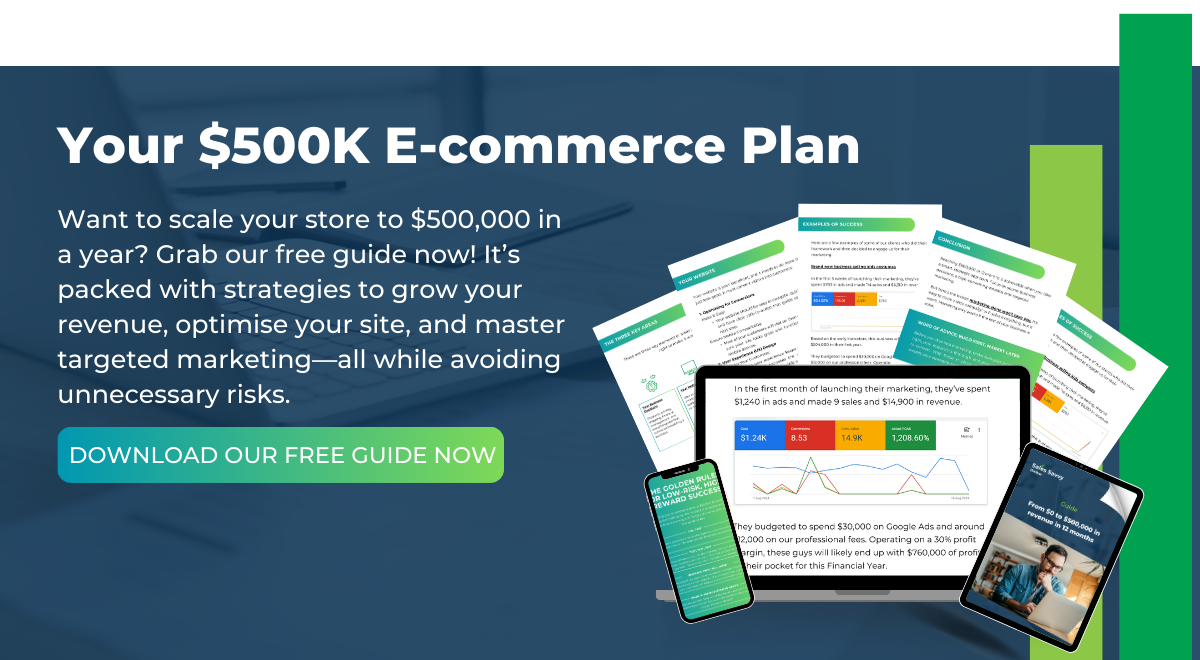Struggling to drive sales in your dropshipping business? You’re not alone. Many entrepreneurs find it challenging to stand out in a crowded market. This guide covers essential strategies like identifying your target audience, crafting compelling product descriptions, and leveraging social media marketing. By implementing these approaches, you’ll enhance content creation, improve lead generation, and effectively audit your marketing efforts. With the right strategy, your paid search campaigns can yield significant results, turning your dropshipping dreams into reality. So, without further ado, here are our top 5 strategies our dropshipping marketing agency uses:
Identify Your Target Audience for Effective Marketing Strategies
Knowing your customers is key to dropshipping success. Understanding who they are, what they need, and how they shop can transform your marketing efforts.
Determine Key Demographics for Your Dropshipping Business
- Use analytics tools to identify age, gender, location, and buying behaviour.
- Tailor marketing campaigns to fit the interests and lifestyles of your ideal customer.
- Choose web design elements that appeal to your target audience for a seamless shopping experience.
Assess Customer Pain Points That Drive Purchase Decisions
- Understand common frustrations like high shipping costs, product quality concerns, or lack of trust.
- Address these pain points directly in product descriptions and marketing content.
- Improve email marketing and social media strategies by focusing on solving customer problems.
Create Customer Personas to Tailor Your Marketing Approach
- Develop profiles of your ideal customers based on interests, behaviours, and needs.
- Adjust content strategies to fit different personas—some may respond better to video content, while others prefer in-depth blog posts.
- Leverage search engines and social media insights to refine messaging for each persona.
Utilise Social Media Insights to Refine Audience Targeting
- Analyse engagement metrics on platforms like Facebook, Instagram, and TikTok.
- Identify the type of content that resonates most with your audience.
- Optimise conversion rate strategies based on data-driven insights.
Monitor Trends to Adjust Audience Focus Over Time
- Regularly review digital marketing trends to stay ahead of shifting consumer behaviour.
- Pivot towards rising niches, such as eco-friendly products or sustainable fashion.
- Keep content and ads relevant by staying in tune with evolving audience preferences.
Evaluate Competitor Audiences to Identify Gaps and Opportunities
- Research competitor marketing tactics and target demographics.
- Find underserved markets and position your brand to fill those gaps.
- Use this information to refine your unique value proposition.
Craft Compelling Product Descriptions That Convert Sales
Your product descriptions should not only inform but also persuade, this applies to branded and non-branded products. A well-written description can significantly improve conversion rates.
Highlight Unique Features That Differentiate Your Products
- Focus on what makes your product better than competitors.
- Use storytelling to engage potential buyers.
- Work with a digital marketing agency to refine product messaging for maximum impact.
Use Persuasive Language to Evoke an Emotional Response
- Appeal to emotions like excitement, security, or happiness.
- Create urgency with phrases like “limited stock” or “exclusive offer.”
- Use engaging storytelling to connect with customers on a deeper level.
Incorporate Keywords to Improve Search Visibility
- Use SEO-friendly product descriptions with relevant keywords.
- Optimise metadata and tags to increase visibility in search engines.
- Research trending search terms related to your products.
Include Customer Reviews to Build Trust and Credibility
- Showcase real testimonials to increase trust and social proof.
- Feature user-generated content to validate product quality.
- Address negative reviews with transparency and excellent customer service.
Opt for Concise Formatting for Easy Readability
- Use bullet points to highlight key benefits.
- Keep sentences short and digestible.
- Ensure mobile-friendly formatting for a smooth user experience.
Keep Descriptions Focused on Customer Benefits and Use Cases
- Emphasise how the product solves a problem or improves daily life.
- Use real-world examples to illustrate benefits.
- Align descriptions with customer interests and lifestyle choices.
Maximise Social Media Marketing for Dropshipping Success
Social media is a powerful tool for driving traffic and building brand awareness. Here’s how to use it effectively:
Choose the Right Platforms Based on Your Target Audience
- Instagram and TikTok work well for younger audiences and visual products.
- Facebook is great for retargeting and running community-driven campaigns.
- Pinterest can drive traffic for niche products like home decor or fashion.
Develop a Consistent Posting Schedule for Engagement
- Post regularly to keep your audience engaged.
- Use content calendars to plan campaigns ahead of time.
- Schedule posts at peak engagement times to maximise reach.
Create Engaging Visuals and Videos That Showcase Products
- Invest in high-quality images and videos.
- Use short-form content like TikTok videos and Instagram Reels.
- Highlight product use cases and customer testimonials in visual content.
Run Targeted Ads to Reach Potential Customers Effectively
- Use Facebook Ads, Google Ads, and influencer collaborations to expand reach.
- A/B test different ad creatives and copy to see what performs best.
- Retarget website visitors and cart abandoners to boost conversions.
Collaborate With Influencers for Wider Brand Exposure
- Partner with micro-influencers to build authenticity and trust.
- Offer free samples to influencers in exchange for honest reviews.
- Use affiliate marketing to incentivise influencer-driven sales.
Monitor Social Media Analytics to Refine Strategies
- Track engagement rates, click-through rates, and conversions.
- Identify which content types perform best and double down on them.
- Continuously refine strategies based on analytics data.
Employ Email Marketing to Retain Customers Effortlessly
Email marketing helps you nurture customer relationships and encourage repeat purchases.
Build a Targeted Email List for Personalised Campaigns
- Offer incentives like discounts or exclusive deals in exchange for sign-ups.
- Segment lists based on customer preferences and behaviour.
- Personalise emails to improve engagement and conversions.
Craft Attention-Grabbing Subject Lines for Higher Open Rates
- Use curiosity-driven or benefit-focused subject lines.
- A/B test different subject lines to see what works best.
- Keep subject lines short and compelling.
Segment Your Audience for Tailored Messaging
- Create separate email campaigns for new customers, repeat buyers, and inactive subscribers.
- Customise content to match customer interests.
- Automate drip campaigns to nurture leads over time.
Incorporate Promotions and Discounts to Encourage Sales
- Send exclusive discounts to loyal customers.
- Use time-sensitive offers to create urgency.
- Highlight bundled deals to increase order value.
Monitor Campaign Performance to Optimise Future Emails
- Track open rates, click-through rates, and conversion rates.
- Remove inactive subscribers to maintain a high deliverability rate.
- Experiment with different email formats and CTA placements.
Track and Analyse Metrics to Adjust Marketing Tactics
Measuring success is key to refining and improving your marketing efforts.
Set Clear KPIs to Measure Marketing Effectiveness
- Define key performance indicators (KPIs) like conversion rates and customer acquisition cost.
- Align marketing efforts with business goals.
Use Google Analytics to Monitor Website Performance
- Track where your traffic is coming from.
- Identify top-performing pages and optimise underperforming ones.
- Use heatmaps to see how users interact with your site.
Assess Conversion Rates to Identify Successful Strategies
- Analyse which marketing channels drive the most sales.
- Improve product pages with data-backed insights.
- Test different CTAs and landing page layouts.
Adjust Marketing Spend Based on Return on Investment
- Allocate budget to high-performing marketing channels.
- Reduce spend on ineffective strategies.
- Test different ad placements to maximise ROI.
Collect Customer Feedback to Inform Future Campaigns
- Use surveys and reviews to gauge customer satisfaction.
- Implement feedback to improve product offerings.
- Address concerns in real time to build brand trust.
Conclusion
By implementing smart marketing strategies, you can scale your dropshipping business effectively. From identifying key demographics to leveraging email marketing and social media, these approaches will help you drive engagement, boost conversions, and build lasting customer relationships. Stay proactive, track your progress, and refine your tactics for sustained success in the competitive eCommerce landscape. We’ve compiled an extensive guide about everything dropshiping and marketing, read it here.


